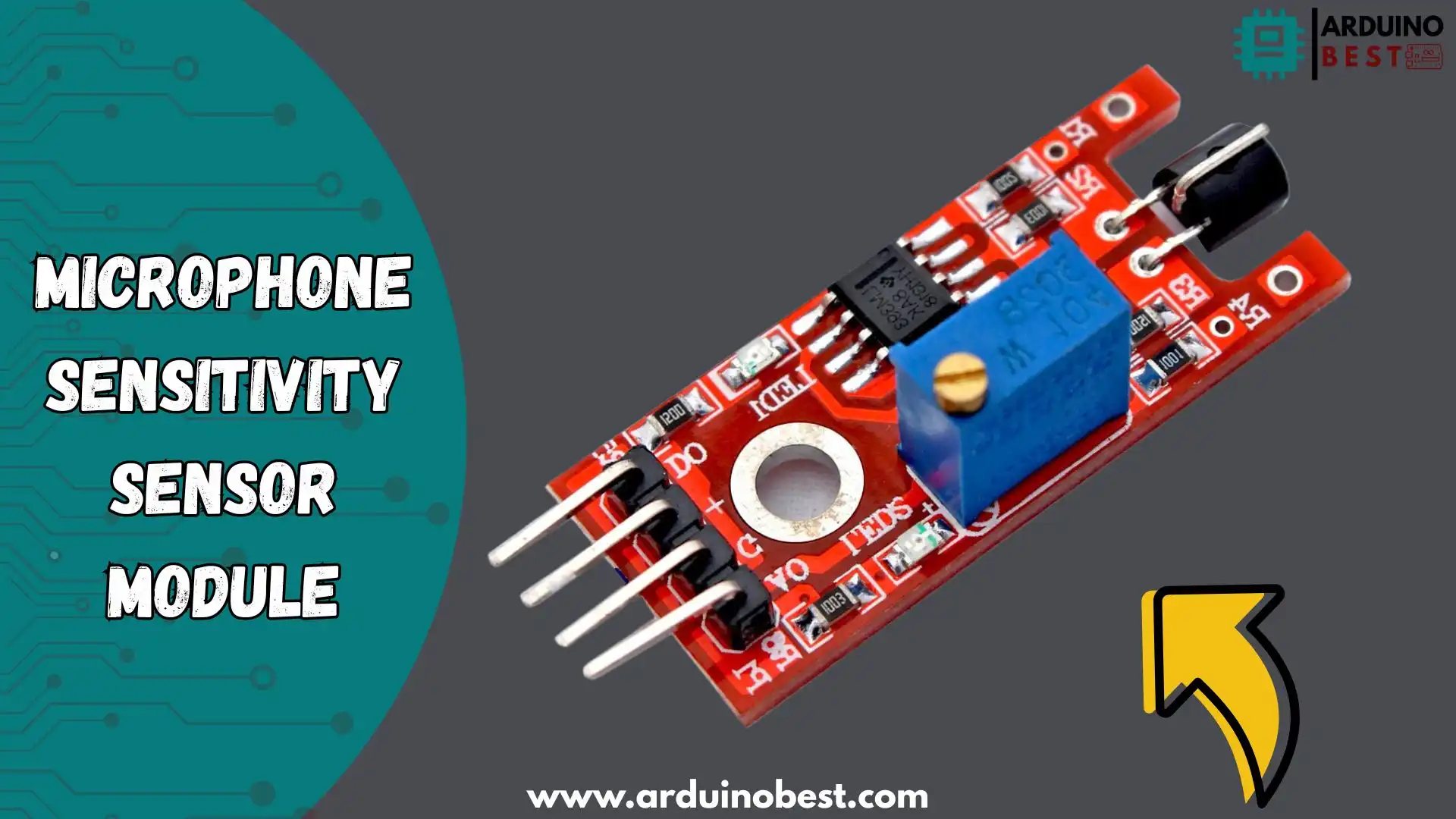Table of Contents
Introduction
In today’s world, metal touch sensor modules are becoming integral in many consumer electronics, industrial systems, and smart devices. They provide a reliable and convenient way to detect human touch and make various systems more intuitive and user-friendly. These sensors are used in everything from smartphones and smart homes to automotive systems, providing accurate touch input in a compact form. In this article, we will dive into how these sensors work, their different types, applications, and how to choose the right module for your project.
What is a Metal Touch Sensor Module?
A metal touch sensor module is a type of touch-sensitive device that detects the proximity or contact of human skin with a metallic surface. The module typically works by measuring changes in electrical properties when a finger or another conductive object interacts with the sensor’s surface.
These sensors have numerous applications in various industries, thanks to their reliability, compact size, and durability. Unlike traditional mechanical buttons or switches, they do not have moving parts, making them more resistant to wear and tear. Instead, they rely on electrical signals to detect touch and translate it into an action.
For more detailed insights into how capacitive touch sensors work, refer to this guide on capacitive touch sensors.
How Does a Metal Touch Sensor Work?
A metal touch sensor module works by using the principles of capacitance or resistance. When a human body (which is conductive) comes in contact with the metal surface, it changes the electrical field or resistance at the sensor’s surface.
- Capacitive Touch Sensing: This is the most common mechanism used in modern metal touch sensor modules. Capacitive sensors detect changes in capacitance when a human finger is near or touches the metal. The sensor detects the variation and sends an electrical signal to the microcontroller.
- Resistive Touch Sensing: In resistive sensors, the touch alters the resistance of the metal, allowing the sensor to register a signal when it is pressed or touched.
If you’re interested in exploring various types of touch sensors in more detail, check out this article on types of touch sensors explained.
Both types of sensors are reliable, but capacitive sensors are often preferred due to their high sensitivity and ability to detect light touches without direct physical contact.
Types of Metal Touch Sensor Modules
There are two primary types of metal touch sensor modules: Capacitive and Resistive. Understanding their differences will help you select the right one for your application.
Capacitive Touch Sensor Modules
Capacitive touch sensors are the most common type in metal touch sensor modules. These sensors detect changes in capacitance when a conductive object, like a human finger, approaches the sensor’s surface.
- Working Principle: A capacitive sensor detects a change in the electrostatic field caused by the finger’s conductive properties.
- Advantages:
- High sensitivity and accuracy
- Supports multi-touch
- No moving parts, which increases longevity
- Applications:
- Smartphones and touch screens
- Home automation systems
- Wearables
Resistive Touch Sensor Modules
Resistive touch sensors detect changes in resistance caused by physical pressure. While these sensors are more robust than capacitive sensors, they are less sensitive to light touches.
- Working Principle: The sensor has two conductive layers that come into contact when pressure is applied, altering the resistance and generating a signal.
- Advantages:
- Can be used with any type of material, including gloves
- More resistant to environmental factors
- Applications:
- Industrial control panels
- POS (Point of Sale) systems
- Medical devices
Applications of Metal Touch Sensor Modules
Metal touch sensors have a wide range of applications, offering more than just basic touch input. Here are some key areas where they are extensively used:
Consumer Electronics
- Smartphones: Metal touch sensors allow for sleek, responsive interfaces.
- Smart Home Devices: These sensors make home automation systems more intuitive by enabling touch-based control.
Industrial Applications
- Control Systems: Used in factory automation to detect user input for machinery control.
- HMI Systems: Operators use these sensors in industrial machinery for quick, touch-based navigation.
Automotive
- Touch Panels in Cars: Metal touch sensors are used in car dashboards and control panels for a modern user interface.
Healthcare
- Medical Equipment Interfaces: Metal touch sensors in medical devices help ensure that patients and doctors can interact with touch-based systems efficiently and hygienically.
Security and Automation
- Keyless Entry Systems: Metal touch sensors are often used in security systems for doors, gates, and more, enabling quick touch-based entry.
Advantages of Using Metal Touch Sensors
Here are the key benefits of using metal touch sensor modules:
- Durability: Unlike mechanical buttons, touch sensors have no moving parts, increasing their lifespan.
- Sleek Design: Metal touch sensors allow for slim and stylish device designs.
- Ease of Integration: They are easy to incorporate into microcontroller-based projects like those using Arduino or Raspberry Pi.
- High Sensitivity: Capacitive sensors provide fast and accurate detection, even with a light touch.
How to Choose the Right Metal Touch Sensor Module
Choosing the right metal touch sensor module depends on several factors:
- Sensitivity: Consider whether you need highly sensitive capacitive sensors or more robust resistive sensors for industrial environments.
- Environmental Conditions: Some sensors work better in high humidity or extreme temperatures, while others may be more resistant to dust or water.
- Size and Mounting: Choose a module that fits the space in your design and supports the required mounting options.
Troubleshooting and Common Issues with Metal Touch Sensors
While metal touch sensors are generally reliable, you might encounter the following issues:
- False triggers: This can occur due to high sensitivity or environmental interference. Adjusting the sensor’s threshold can help.
- Inconsistent response: This is often a calibration issue. Recalibrating the sensor or adding noise filters can resolve this.
- Environmental Interference: In high EMI (electromagnetic interference) environments, using shielding can prevent false readings.
Future Trends in Metal Touch Sensor Modules
- MEMS Technology: As Microelectromechanical Systems (MEMS) technology advances, we can expect even more sensitive and accurate touch sensors.
- Smart Integration: With the rise of AI and machine learning, touch sensors could integrate with other technologies for more sophisticated responses.
- Improved Materials: New materials may allow for sensors that are thinner, more flexible, and even more durable than ever before.
FAQs
1. What is the difference between capacitive and resistive touch sensors?
- Capacitive sensors detect changes in capacitance and offer more sensitivity, while resistive sensors rely on pressure and are more durable in harsh environments.
2. Can metal touch sensors work in extreme conditions?
- Yes, some resistive touch sensors are designed to work in high temperatures or with gloves, making them suitable for industrial applications.
3. Are metal touch sensors energy-efficient?
- Metal touch sensors, particularly capacitive types, consume low power, making them ideal for battery-operated devices.
Conclusion
In conclusion, metal touch sensor modules have revolutionized the way we interact with electronic devices. They offer a reliable and durable alternative to mechanical switches, with the added benefits of increased sensitivity and seamless integration. Whether you’re designing a smart home system, medical equipment, or consumer electronics, incorporating these sensors can significantly improve the user experience by providing touch-sensitive controls that are both efficient and long-lasting.
Understanding the different types of metal touch sensors, their working principles, and their various applications is essential for selecting the right sensor for your project. By leveraging their versatility, you can enhance the functionality of your devices, ensuring that they are not only intuitive but also energy-efficient. As technology continues to advance, metal touch sensors will remain a cornerstone in the development of cutting-edge electronics, offering improved user interfaces and enabling more sophisticated designs. Their use in industries like automotive, healthcare, and consumer electronics will continue to grow, making them an indispensable component in modern technology.
Arduino Projects:
1- Complete Guide for DHT11/DHT22 Humidity and Temperature Sensor With Arduino
2- DHT11 – Temperature and Humidity Sensor
3- DHT22 – Temperature and Humidity Sensor (more accurate than DHT11)
4- BMP180 – Barometric Pressure and Altitude Sensor
5- BMP280 – Barometric Pressure & Temperature Sensor
6- BME280 – Temperature, Humidity, and Pressure Sensor
7- Arduino Flex Sensor Controlled Robot Hand
8- Arduino ECG Heart Rate Monitor AD8232 Demo
9- Arduino NRF24L01 Wireless Joystick Robot Car
10- Arduino Force Sensor Anti-Theft Alarm System
11- Arduino NRF24L01 Transceiver Controlled Relay Light
12- Arduino Rotary Encoder Controlled LEDs: A Complete Guide

